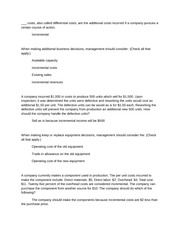

In somatic reflexes, the effector is skeletal muscle. An effector is a muscle or gland that receives the impulse form the motor neuron. When you drag an element over a valid drop target, these events fire in the following sequence. A motor neuron transmits a nerve impulse from the spinal cord to a peripheral region.ĥ. The integration center involves one synapse (monosynaptic reflex arc) or two or more synapses (polysynaptic reflex arc) in the gray matter of the spinal cord.Ĥ. The sensory neuron transmits the impulse to the spinal cord.ģ. The receptor is the part of the neuron (usually a dendrite) that detects a stimulus.Ģ. The reflex can happen faster than your brain can process it.Ī reflex arc involves the following components:ġ. Most reflexes are spinal reflexes with pathways that traverse only the spinal cord.ĭuring a spinal reflex, information may be transmitted to the brain, but it is the spinal cord, and not the brain, that is responsible for the integration of sensory information and a response transmitted to motor neurons. The latest version of Angular comes with strict mode, you have to manually disable the strict mode you can set strict: false, 'noImplicitReturns': false and 'strictTemplates': false inside the compilerOptions and angularCompilerOptions in tsconfig.json file. And Annette s P three Carbon will have 25% s character, so that will be the longest on That's the answer to Chapter one problem number 73.A reflex is a rapid, involuntary response to a stimulus. cd angular-drag-drop-example Disable Strict Angular TypeStrict Errors. An SP two carbon will be 33% s character, so that will be in the middle. When you're comparing three carbon hydrogen single bonds as we are in part B, we need to look at the hybridization sze of the carbons involved in these bonds and remember other way that as p character works So, uh, on SP carbon is gonna be 50% s character, So that would be the shortest. Triple is gonna be the shortest, a double in the middle and single bond the longest. So when you're comparing when you're directly comparing double triple in single bonds, that's pretty easy. Ah, and so it is going to be the longest.

Um, and then the C s p three carbon in the third bond, um is going to have the least s character. In the Toolbox, select one of the drawing tools (for example, Ellipse or Rectangle ), and then draw an element in the active panel. Drag an element from the Toolbox to the artboard. So it's going to be Ah, the the in the middle. To add an element to a layout in XAML Designer, do one of the following: Double-click an element in the Toolbox (or select an element in the Toolbox and press Enter ). Click and drag on elements in order Rank the following bonds in order of increasing bond length (shortest to longest), based on periodic trends, starting with the shortest bond at the top of the list: Instructions KS HO K-Se XF We don’t have your requested question, but here is a suggested video that might help. So it's going to have intermediate s character. Um and so it's going to be the shortest here, so are the next carbon is sp two hybridized s. It's going to have the highest possible percent s character. So the 1st 1 the carbon, uh, that's part of this bond that we're looking at has a triple bond to another carbon.

In HTML5, drag and drop is part of the standard Any element can be draggable, But for advanced. Drag and drop is an intuitive way of moving and rearranging elements in Web and Mobile applications. Um, and it's it's going to come down to the hybridization off the carbons and therefore the percent s character off the bond. Update: Click here to watch a step by step tutorial for implementing Drag & Drop using ReactJS Hooks. So each of these is a carbon hydrogen bond. We need to look at the hybridization of the carbon. It would be much better to be able to move elements around by left-click-hold and move them around. It is still a clumsy way of doing and far from perfect. For initiating the drag and drop, you should mousedown anywhere you want, on the text. Try it, it also works when you Group/Ungroup groups. As you noticed in the example above, the text always moves in a way that its center is under the pointer, like this: pageX - text.offsetWidth / 2 + px pageY - text.offsetHeight / 2 + px However, there is a side-effect here. We have to look at these three bonds within the same molecule. A trick I use in the Tree view to reorder elements is to Group and Ungroup elements i want to place together. So the triple bond is gonna be the shortest double eyes going to be, uh, intermediate to a triple in a single and then a single bond eyes going to be the longest support. So remember triple bond eyes going to be shorter than a double bond, which will be shorter than a single bond. Um and so part A here is actually in order. Um, and we were asked to look at to Siri's bonds on and talk about, uh, compare them in terms of length. This is the answer to Chapter one problem number 73 from the Smith Organic Chemistry textbook.


 0 kommentar(er)
0 kommentar(er)
